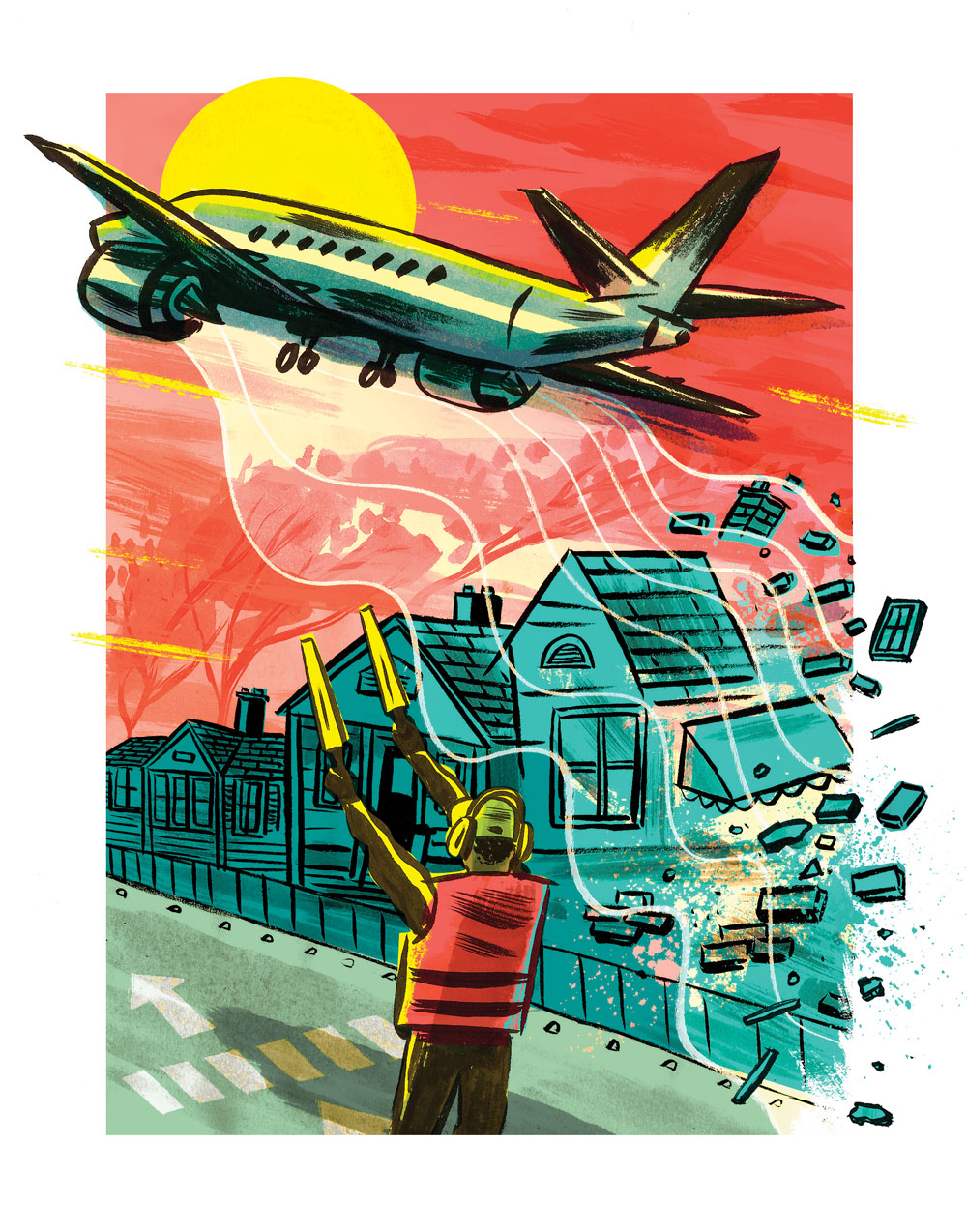
Illustration by Mike Reddy
When Hannah Palmer moved back to her hometown of Forest Park in the mid-2000s, she found that every place she’d ever lived in had been obliterated. The destructive force at play: the Atlanta airport. Palmer’s first home was replaced by FAA offices, the second by Air Logistics Center II, a freight complex. “We have the world’s busiest airport,” writes Palmer. “So what? If Atlanta wants to grow into something more than just a constellation of busy, efficient, but eminently unlovable places, shouldn’t someone measure the airport’s cultural impact, count the cost of all that’s been lost?”
So begins Flight Path: A Search for Roots beneath the World’s Busiest Airport, a persuasive memoir that uses personal history to construct a troubling indictment of the airport’s relentless expansion. Palmer argues that even though it’s an obvious catalyst for the regional economy, the 4,700-acre facility has “gradually made the south side uninhabitable.” She writes, “When the airport grows, everything it touches hardens into parking lots and warehouses.”
Palmer, an urban designer, reconstructs how, nearly 40 years ago, the airport swallowed Mountain View, the small town near Hapeville where her parents lived when they were first married. In the late 1970s and 1980s, the City of Atlanta paid residents to relocate due to noise from Hartsfield. Returning to the site of Mountain View in 2004, Palmer and her husband duck under a fence and find a ghost town where “the jet noise and heat were like a hair dryer to the face.”
The author’s meticulous—if occasionally tedious—research sorts through the logistics of dismantling hundreds of residences and businesses unlucky enough to sit on “noise land.” What she finds challenges some established notions about white flight and the exodus out of Atlanta’s south side that unfolded as “both the black and white communities were physically erased.”
At its conclusion, Flight Path lands a timely argument for city planning that nourishes instead of displaces. The author wonders if “airport urbanism” could reboot the extensive property as a livable community. “Could the runways ever be our riverfront? Plane spotting can be oddly soothing.”
It may be a pie-in-the-sky fantasy, but this proposed Atlanta Aerotropolis sounds like a destination worth aiming for.
Palmer will stop by Highland Inn Ballroom to discuss her debut memoir on April 13.
This article originally appeared in our April 2017 issue.














